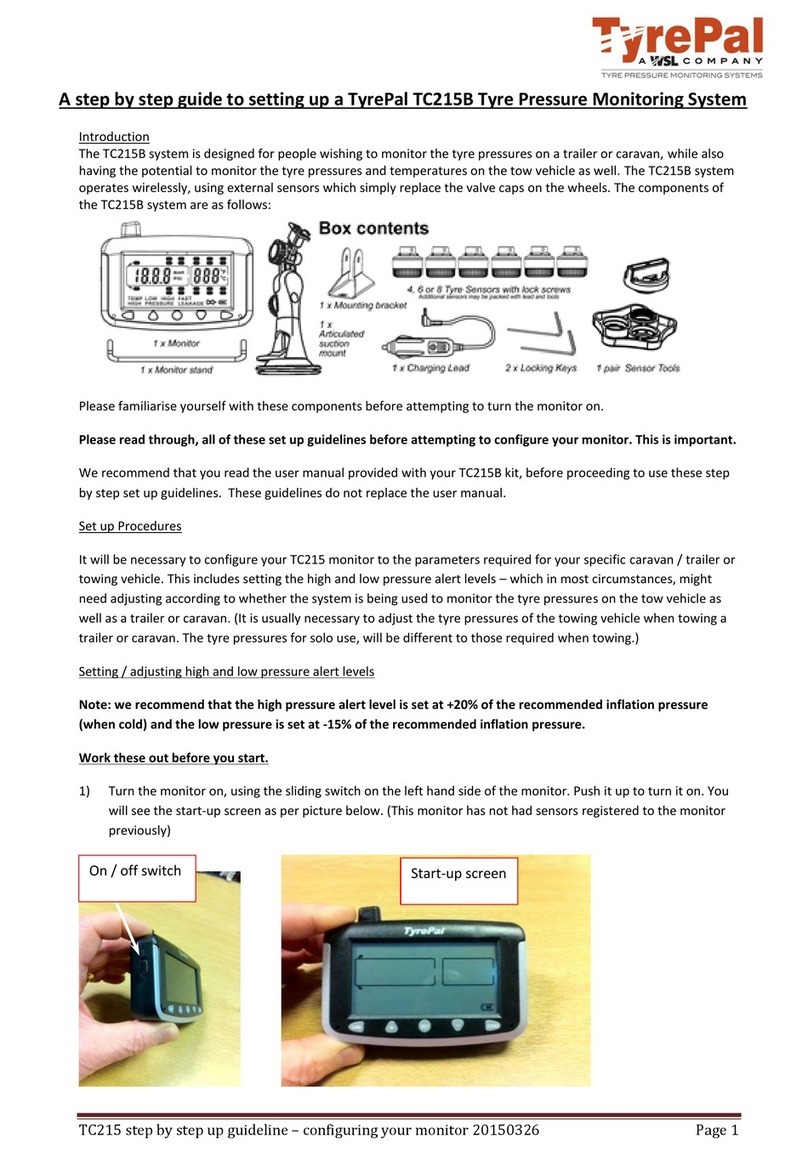What to expect
Unless you have used this type of TPMS before, you will probably be unaware of what happens to
your vehicles’ tyres whilst driving. The tyres’ pressure and temperature will naturally increase whilst
you are driving your vehicle. This is completely normal and is taken into account when the tyres are
designed and manufactured. Youcan program alert levels for low and high pressure and also
temperature.
The system is used to monitor the pressure and temperature of each tyre. The system will give an
alert if there is abnormal pressure and / or temperature, making the driver aware that something is
outside of normal parameters. The system can also enhance fuel efficiency, prolong tyre life and
make driving more comfortable. Be sure to read the user guide carefully before installation and keep
the manual safe for future use.
It is highly recommended to read the instructions below before installing the system:
The monitor should be installed inside the vehicle where it does not affect normal driving.
It is your responsibility to ensure that it is suitable for your particular vehicle and that it is working
correctly and properly maintained. Check the sensors and valve stems regularly, as some road
salts can cause corrosion.
The system does not replace the need to carry out regular checks on the condition and wear
of the tyres.
Keep the small parts and especially the batteries out of the reach of children. If a battery is
swallowed, consult a doctor or visit your nearest hospital. Do not hold a battery with metallic
tweezers as it will cause a short circuit and may lead to burning or explosion of thebattery.
Do not alter the monitor while driving, if an alert sounds pull over when safe to do so.
It is not normally necessary to turn the monitor off. It has an inbuilt motion detector that automati-
cally puts it into sleep mode when no movement is detected for 10 minutes, and when an
external DC power source is notconnected.
Normally, and provided there is some charge in the battery, the monitor will wake up when it senses
movement or vibration such as the opening or closing of the car door. If it doesn’t wake up, press
any button to wake the monitor from sleepmode.
The sensors themselves also have inbuilt motion detectors that will put them into sleep mode when
no movement is detected for 10 minutes, this is to save the battery life. When the vehicle starts
moving, the sensors will wake up in a few yards and refresh the data on themonitor.




























